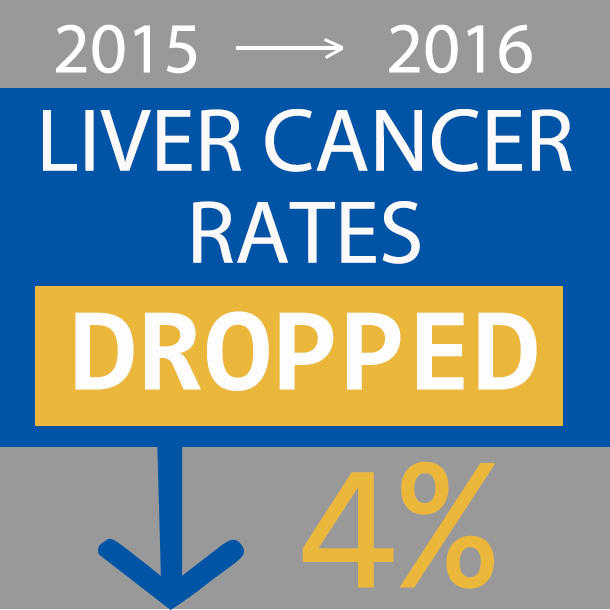Decline in U.S. Hepatocellular Carcinoma Rates
, by DCEG Staff
Overall U.S. hepatocellular carcinoma (HCC) incidence rates plateaued in 2013 and dropped 4% in 2016 according to findings published in Gastroenterology on January 19, 2020.
The rates for HCC, the most common type of liver cancer, have been increasing for decades, however new analysis of 21 Surveillance, Epidemiology, and End Results (SEER) registries found that overall HCC rates dropped from 2015 to 2016, particularly among men, adults 50-64 years old, Hispanics, and people of Asian descent. Meredith Shiels, Ph.D., tenure-track investigator, and Thomas R. O’Brien, M.D., Ph.D., senior investigator in the Infections and Immunoepidemiology Branch, observed that HCC rates increased 5.64 percent/year during 2000-2007, 2.68 percent/year during 2007-2013, and then plateaued in 2013.
HCC is primarily caused by chronic infection with hepatitis B virus (HBV) or hepatitis C virus (HCV), non-alcoholic steatohepatitis and excessive alcohol consumption. Improved treatment of HBV and HCV may have likely contributed to the decline of HCC. These results suggest the beginning of a turn in HCC incidence in the U.S. and warrant future investigations to identify the causes of the decline.
Reference:
Shiels MS and O’Brien TR. Recent Decline in Hepatocellular Carcinoma Rates in the United States. Gastroenterology. January 19, 2020. DOI: 10.1053/j.gastro.2019.12.030.[Epub before print].
